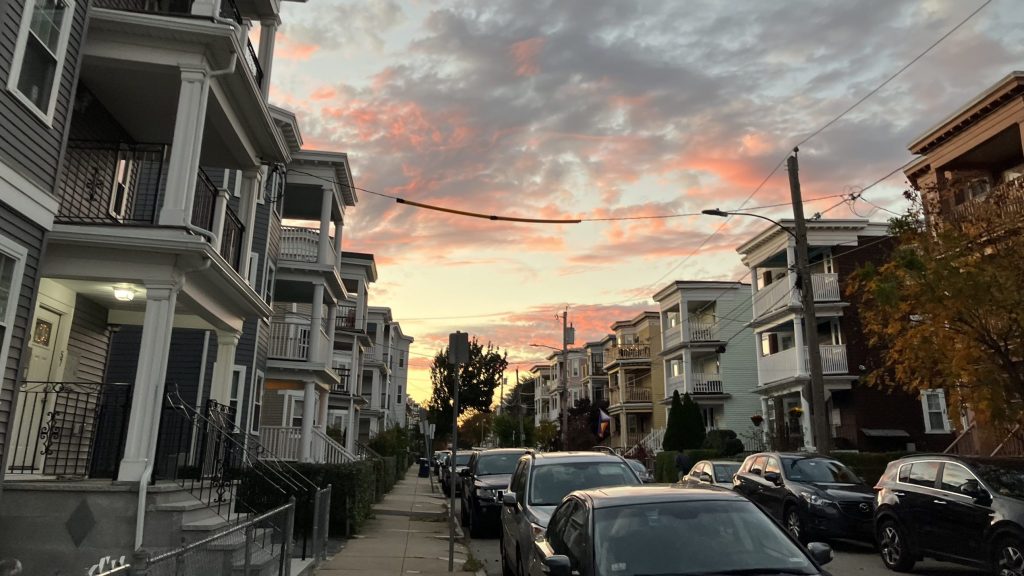IN BOSTON, low-unit and small business buildings may be dwarfed by city towers, but the smallest housing stock contributes more than 19 percent of the city’s greenhouse gas emissions and half of all emissions from buildings. It’s an unwieldy array of structures, and mitigating its climate cost comes with a hefty price tag.
A new report from the Boston Foundation – in partnership with Boston’s Green Ribbon Commission and the climate finance-focused nonprofit Prime Coalition – takes a swing at convincing philanthropic donors that making these small buildings more green could be a meaningful use of their dollars.
The foundation “didn’t want it to be just a call to action to government or to private investors that are already trying to do what they can,” report co-author and Prime Coalition executive director Sarah Kearney said. Instead, the foundation looked for opportunities “where private philanthropists could supercharge the efforts that public and for-profit private actors are already doing, that is mindful of the constraints that are on other public and private efforts.”
It is a push for “catalytic capital” to attract new investment toward a targeted decarbonization goal. They are looking for funds to design a program within the next two years, either located within an existing organization or through a new one, to “help steer private and public players to collaborate on specific, measurable outcomes.”
This follows up on The Boston Foundation’s inaugural Boston Climate Progress Report, released in 2022, which found Boston was “off-track” to meet its interim climate goal. That report identified what it called four “big lifts” needed to catch up, with the biggest lift focused on retrofitting the city’s small building stock.
“To make this as action-oriented as possible, we’re going to focus on one of those lifts,” Kearney said of the new report’s goal, “and really get down into the nitty gritty of what it would take to imagine getting Boston on track toward its climate goals just in the context of that one big lift.”
They picked small building decarbonization – a tangle of state and federal investment leaving serious funding gaps, trust gaps between the government and residents, and the technical difficulty of rehabbing more than 70,000 residential and more than 6,100 non-residential small buildings.
Decarbonizing small units features a yawning price gap between available and needed funds, according to the report. Even after MassSave and federal incentives, low- and moderate-income households in Boston’s small- and medium-sized buildings face a funding gap of $21,000 to $58,000 per unit to decarbonize. This calls for an additional $100-200 million in local or regional public investments annually through 2050 to sufficiently decarbonize, according to the report.
There are many components to retrofitting small buildings – from upgrading insulation, to installing renewable energy generators like solar panels or geothermal systems, to shifting toward electrical rather than gas systems, to installing heat pumps as a way to warm and cool the units. Heat pumps tend to be a useful measure of decarbonization progress, researchers note in the report, because they are “essential to electrify homes” and far more efficient than gas furnaces.
Yet there is something of a disconnect between units targeted for this heat pump transformation and the demographics of small unit residents. Almost half of small residential buildings in Boston – making up 32,668 buildings – are home to households earning less than 80 percent of the area median income, or $95,200 per year for a family of four.
The Boston Foundation Report cites a Metropolitan Planning Area Council critique of the state heat pump plan, noting that MassSave proposed installing more than 119,000 heat pumps between 2025 and 2027, but only 22,200 of those would be in low-income homes and 5,685 in moderate-income homes.
A significant wrinkle in the retrofit project, even when there is money to hand out, is trust and coordination between residents and the retrofitting messengers, like utility companies or government entities. Retrofitting also involves a complex system of energy assessments, planning, and financial aid services.
The city of Boston has what it calls a “retrofit resource hub,” launched in July, which offers information about improving the energy efficiency of small buildings. The city is also launching a small-building retrofit pilot program.
Yet the Boston Foundation report suggests the site “does little more than refer small-building owners to MassSave. Environment Department staff are coordinating with other city offices and with the various programs providing funding for retrofits, with the aim of ensuring a ‘no-wrong-door’ approach that helps Bostonians connect to the appropriate resources regardless of where they start.”
Philanthropic investment could finance a “dedicated effort to better coordinate across disparate organizations,” the report suggests. The report’s authors are aware that relying on wealthy philanthropists could be a risk if enthusiasm dries up or the economy shifts significantly, but they say Boston is uniquely situated to find people interested in being the “glue to pull other pieces together” to support a decades-long project.
“In Boston, we have people who have become wealthy through their understanding of intergenerational systems,” Kearney said. “This is a unique place where those people can step up, and I’m hopeful that they will make this – I’ll call it investment, but it’s really like a charitable act – to bring all of these pieces together.”
The post New report banks on philanthropists to supercharge energy retrofits appeared first on CommonWealth Beacon.

